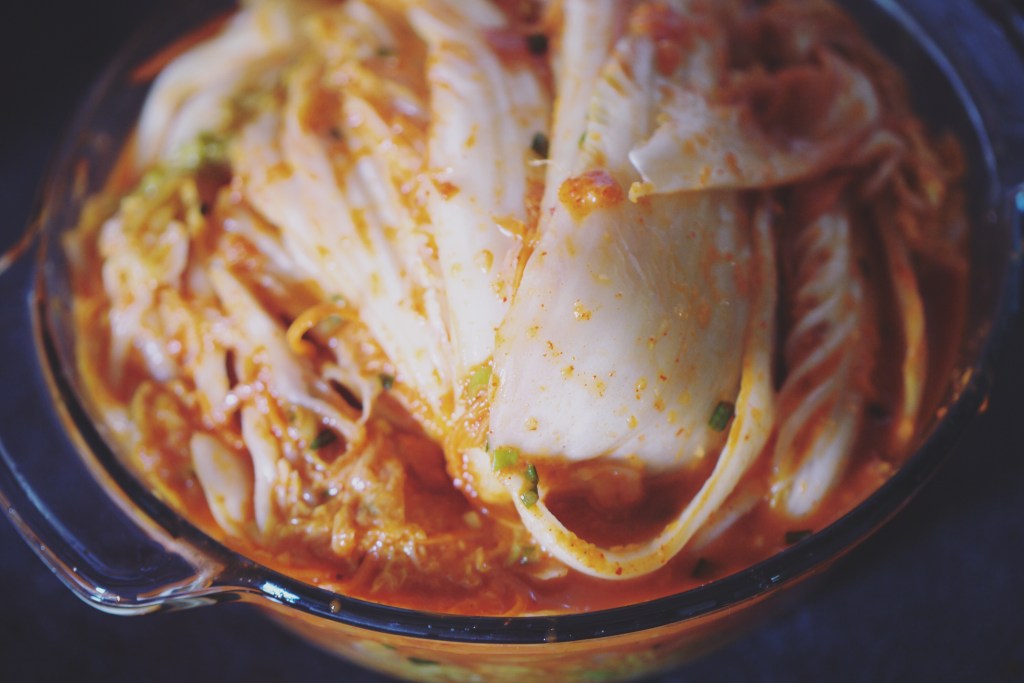
I always think it is a big bonus to be staying near a wet market. The small business owners never fail to shower regular customers with plenty of neighbourly love. Like, they’ll show concern when you don’t turn up for weeks, and then we’ll go on to assure each other that everyone at home is alright; something we no longer take for granted since the onset of the pandemic.
I don’t plan my shopping list in great detail when I shop at the wet markets. I just have an idea how many meals I am buying ingredients for. Then, I’ll let the vegetable stall helpers recommend what to buy and cook. They would usually recommend based on what are in season or in abundance. You’ll need to exercise plenty of self-control as the stallholders tempt you with their suggestions. On this day, there were a lot of huge napa cabbages. And so, that’s how I ended up making kimchi.
I have tweaked my usual quick kimchi recipe (again) because I ran out of rice flour at home. But Maangchi has all purpose flour on this ingredient list here, so I made the switch to avoid another grocery trip. I have provided the recipe at the end of this post, but this post is really about how a vegetarian shops for her homecooked meal plans.
++ Greens ++
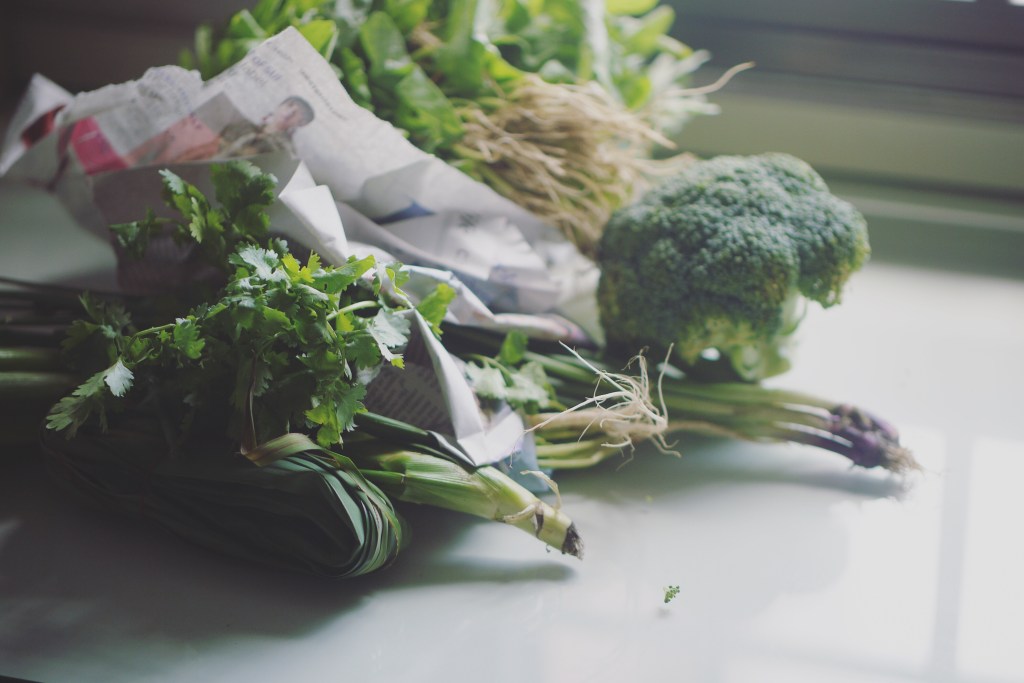
Due to my meat-free dietary choice, my family consumes a lot of leafy vegetables along with me. I also buy one or two hardy vegetables such as broccoli and cauliflowers as they stay fresh longer. I also ask for a handful of spring onions, cilantro and pandan leaves; these are simple ingredients that add oomph to homecooked dishes. The best part about buying from the wet markets is that almost everything comes without plastic wraps. The sellers simply wrap everything in newspapers and place them in my reusable shopping bags.
++ Mushrooms and tofu ++
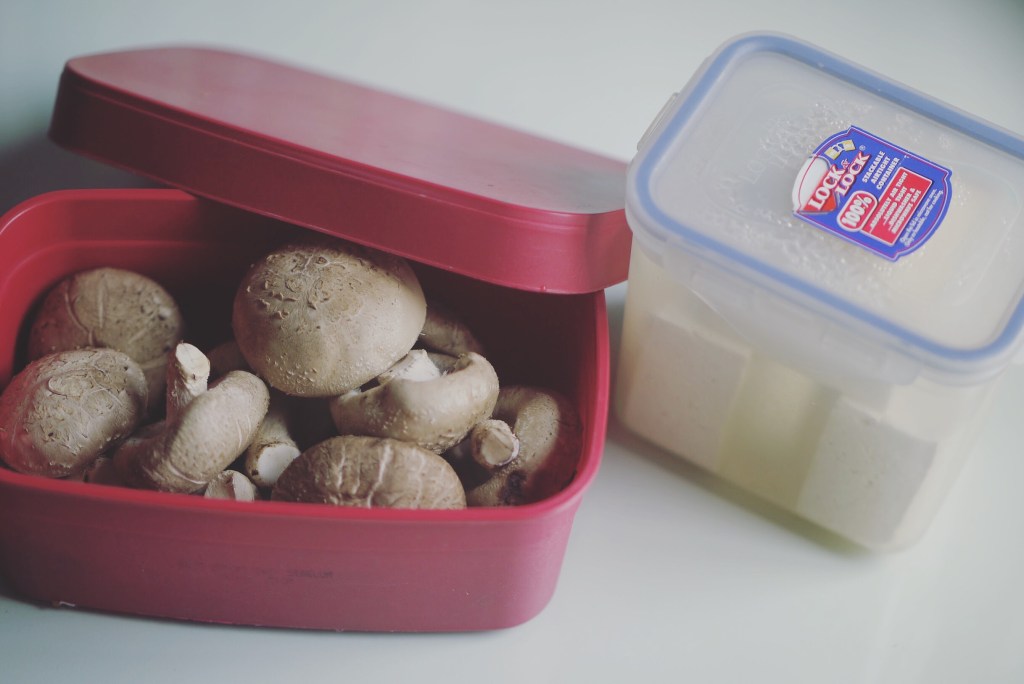
Besides vegetables, mushrooms and tofu are also my must-buy grocery items. I bring my own containers to buy shiitake mushrooms and firm tofu, available in bulk sans plastic. There’s no pressure to buy in huge volume, no buy-1-get-1-free offers here; I simply purchase the amount of food I need and finish up before they turn bad.
++ noodles ++
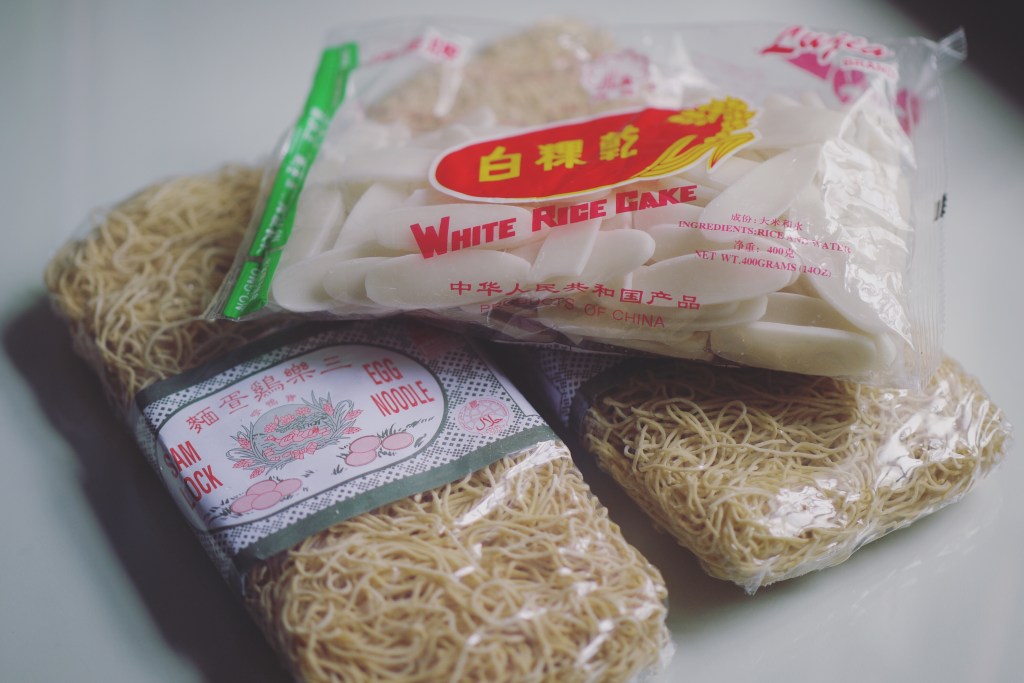
It’s boring to eat rice all the time. I usually keep some packets of noodles and rice cakes at home as they make very useful pantry items for quick and easy one-pot meals. These are not plastic-free, but I am not pursuing a perfectly zero-waste kitchen either. The impact on overall waste reduction is greater when everyone makes a small, conscious effort to cut down on trash. Even if it means an occasional zero waste fail, it’s still better than no efforts at all.
++ More Mushrooms and root vege ++
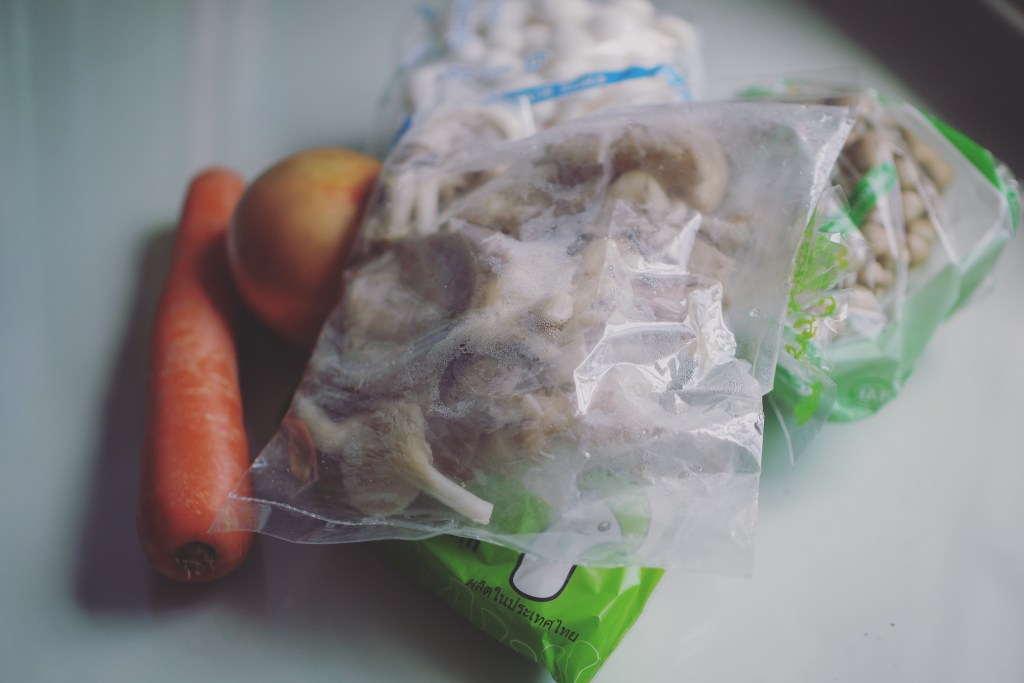
More food packed in plastic, mostly fresh mushrooms. Today, I got oyster and shimeji mushrooms; these provide great flavour to stir fries. Eryngii, also known as king trumpet or king oyster mushroom provides an amazing scallop-like texture; I love adding them to all my Buddha bowl recipes.
With most of of food imported, packaging is a practical solution that keeps produce from ending up as waste due to spoilages. Besides opting for non-excessively packaged items and choosing local produce whenever possible, I also decline additional plastic bags and carriers. And then, I’ll always make sure the food purchased ends up in our tummies and not in the landfills, because food waste is still the dumbest environmental problem. That’s why I only buy loose carrots, onions and potatoes, not those in big bags.
++ Eggs and tempeh ++

No meat, no problem. Eggs and tempeh are great protein-rich meat alternatives. Also come with minimal plastic packaging when you buy these from wet markets. The egg seller even allows you to return the carton for reuse!
++ Storing & Organising ++

Potatoes: Depending on my meal plans, I buy just enough potatoes and use them up before they sprout. Here are my storing tips that I have been using to keep potatoes fresh up to 1.5 weeks:
1. Place them in a mesh bag for ventilation
2. Store in dark, cool place; I keep them in the darkest corner on my countertop
3. Do not wash the potatoes until you are ready to use them
4. Do not keep them in the fridge
5. Keep them away from onions and bananas
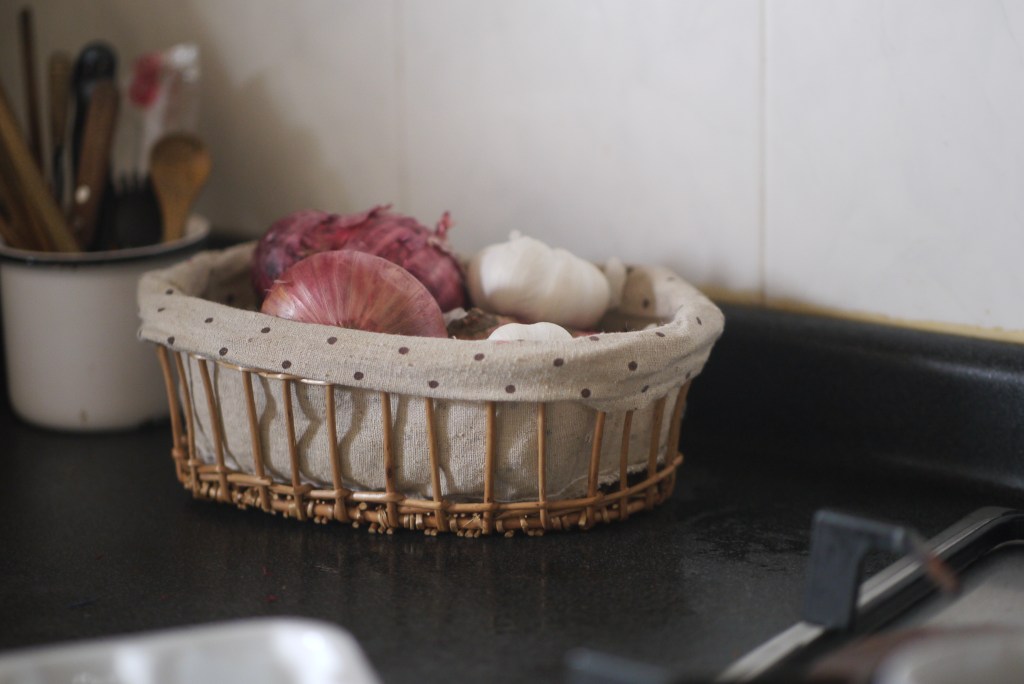
Onions and Garlic: I keep these in a basket on the countertop
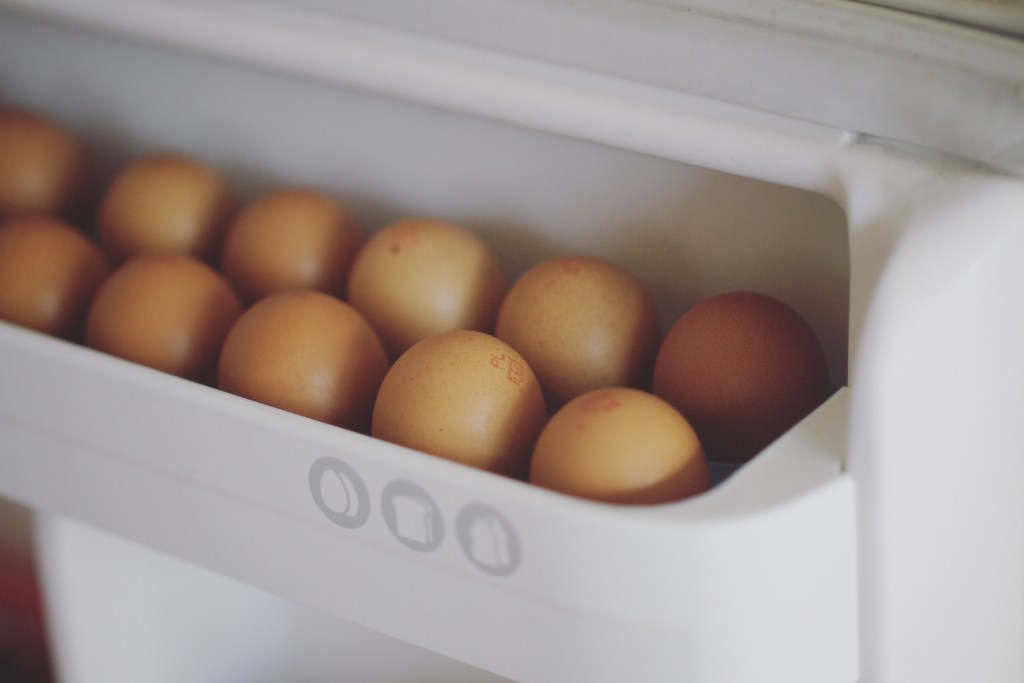
Eggs: They last longer when store in fridge, but I try to use them up in two weeks.
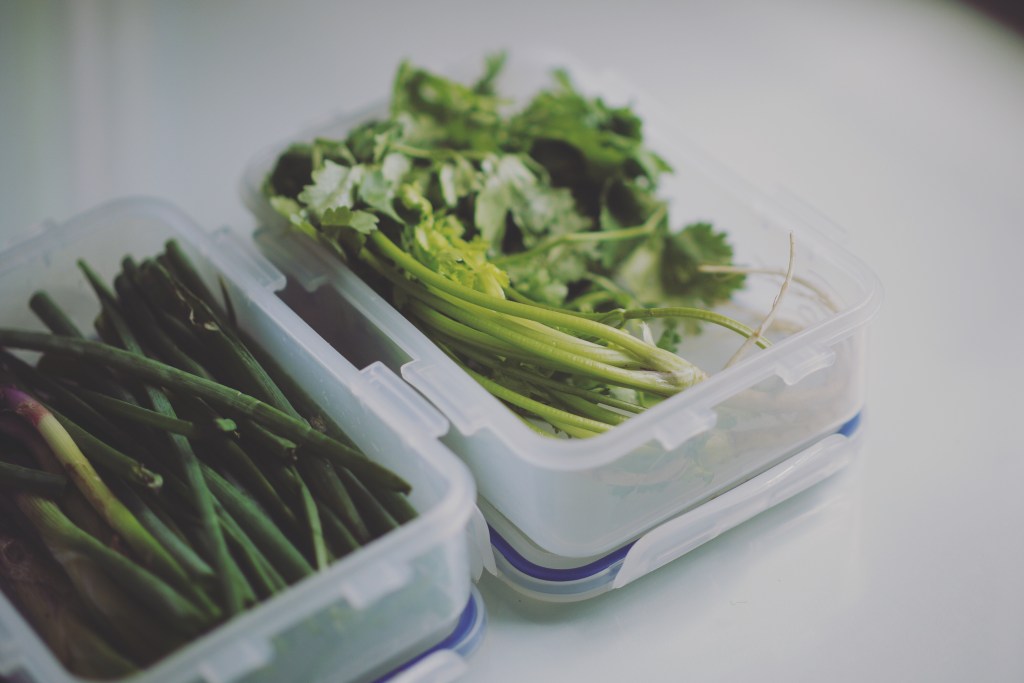
Spring Onions & Cilantro: I store these inside airtight boxes so that they stay fresh; they don’t turn mushy even after one week. Carrots too.
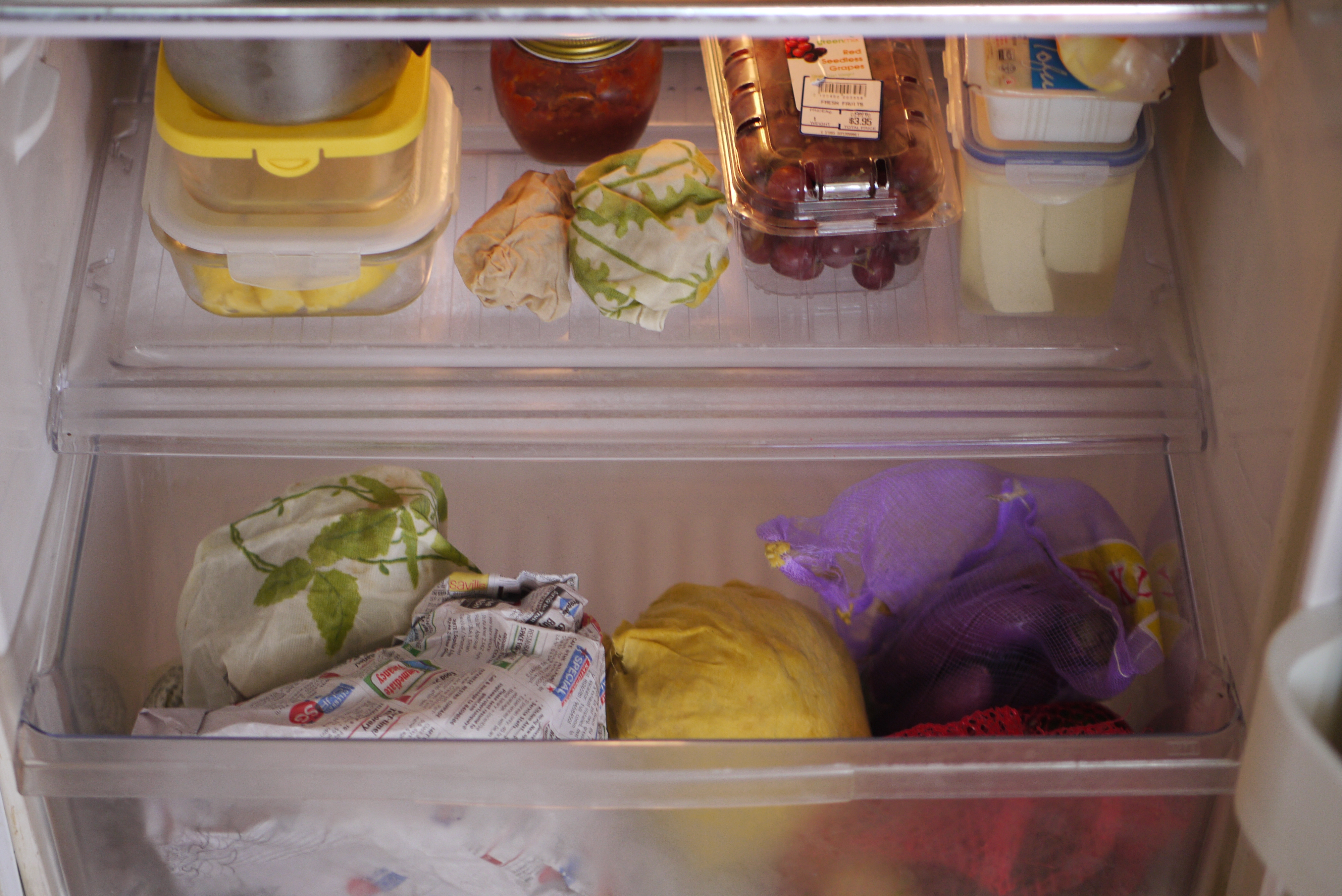
Vegetables and fruit: These go into the crisper drawer, but not before wrapping them in newspapers or beeswax wrap.
After organising my kitchen, I start to make quick vegan kimchi with the following recipe adapted from Maangchi’s recipe here.
Quick VEGA napa cabbage kimchi
1 large napa cabbage Salt For kimchi porridge 2 cups water 4 teaspoons all purpose flour 3 teaspoons sugar 4 tablespoons Korean hot pepper flakes* 3 tablespoons soy sauce 6 cloves garlic 1 teaspoon ginger, grated 1/2 onion, chopped 4 stalks spring onion, chopped 1 carrot, julienned
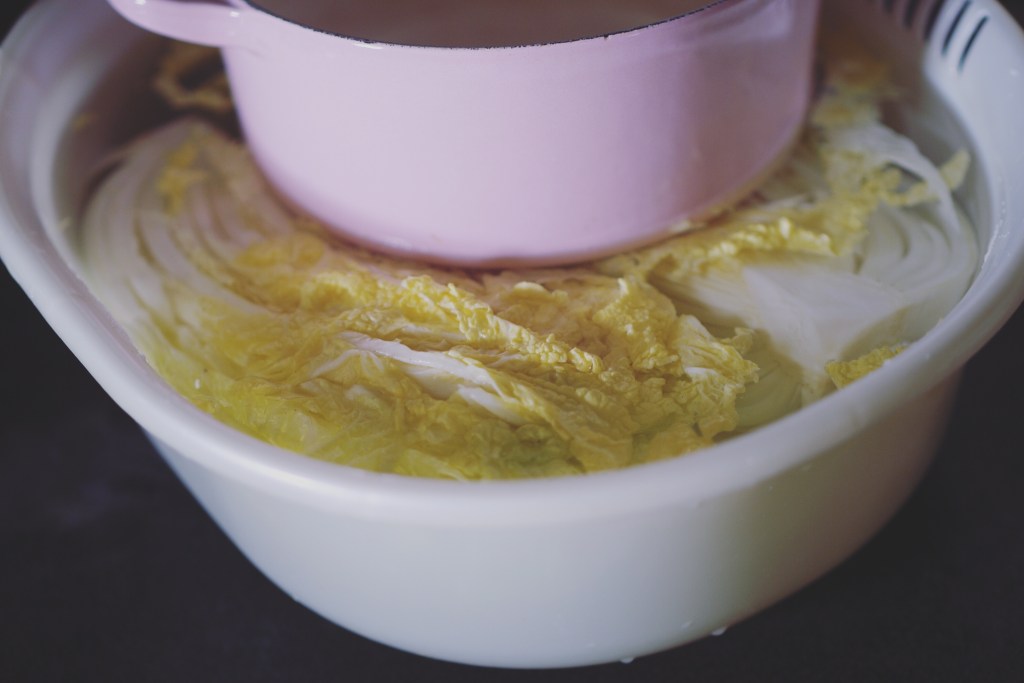
Cut napa cabbage length wise into 4 or 6 parts, depending on your preference and the size of your cabbage.
Rub salt between the leaves, add water and let it sit for 2 hours. I place a cast iron pot to press the cabbage down, making sure it stays submerged in the salted water.
Make kimchi porridge while waiting for the cabbage to be ready.
In a saucepan, add water and all purpose flour, stir with a spoon to mix well.
Cook over medium heat, stirring continuously to make sure the mixture cooked into a smooth paste without burning at the base. Once a thick paste is formed, add sugar, continue stirring until all the sugar grains disappear. Turn off heat and let the paste cool down.
When the paste has completely cooled, add garlic, grated ginger and chopped onions.
Blend with an immersion blender.
Add Korean chili pepper flakes, I use 4 tablespoons, add more if you prefer spicy kimchi.
To finish the porridge making, add soy sauce, julienned carrots and chopped spring onions, stir to mix well.
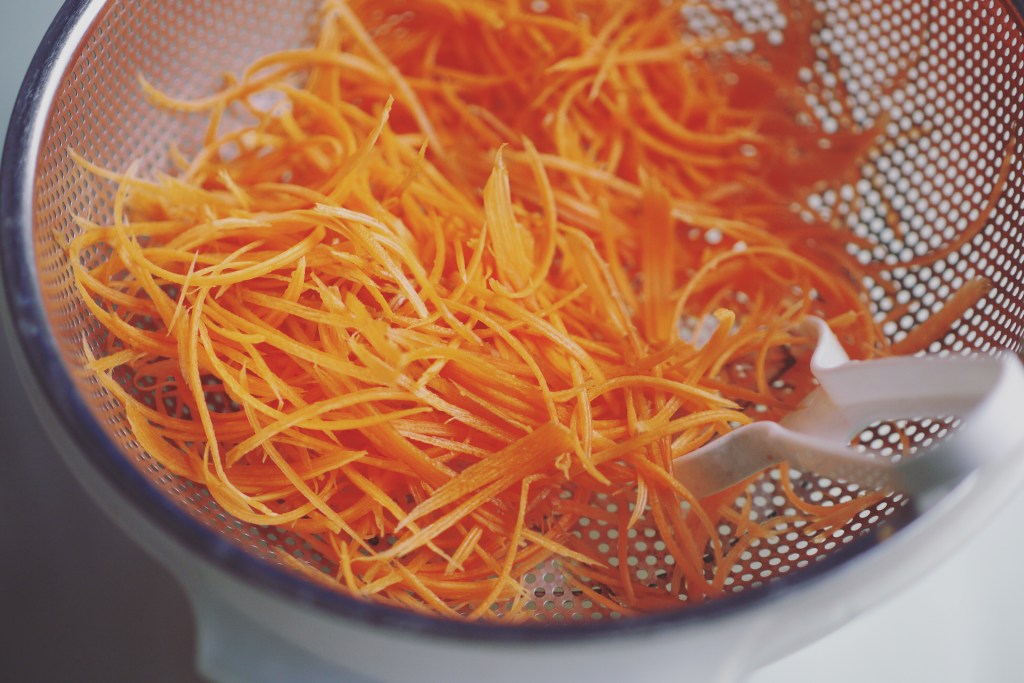
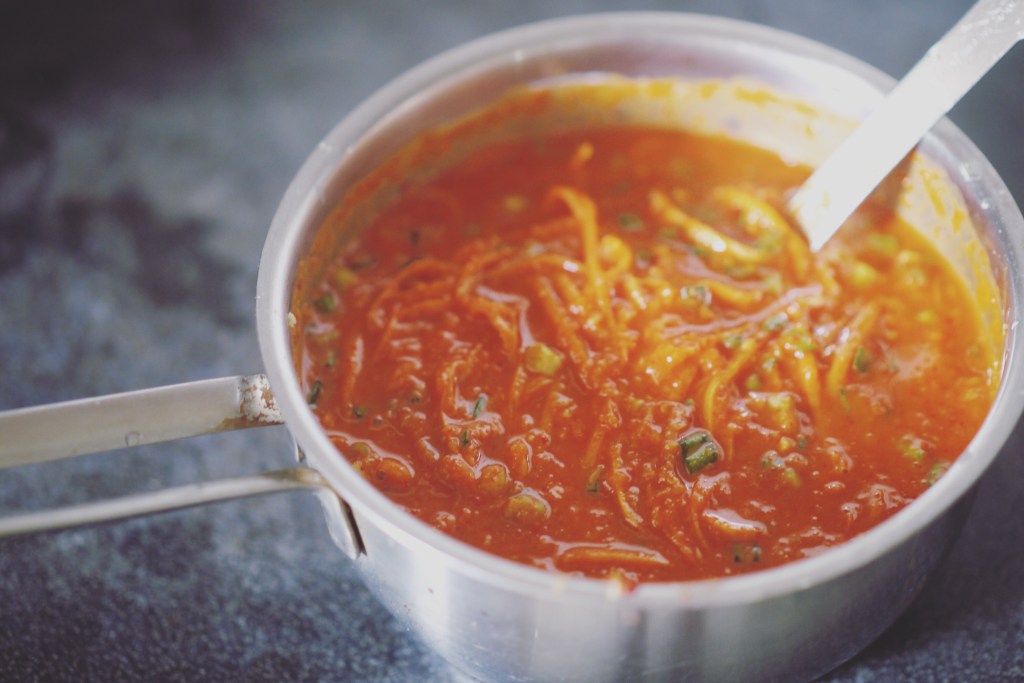
We are now ready to make kimchi!
Rinse the cabbage leaves in clean water to remove all the salt.
Rub kimchi porridge evenly on every leaf, mix well.
This can be served right away as fresh kimchi.
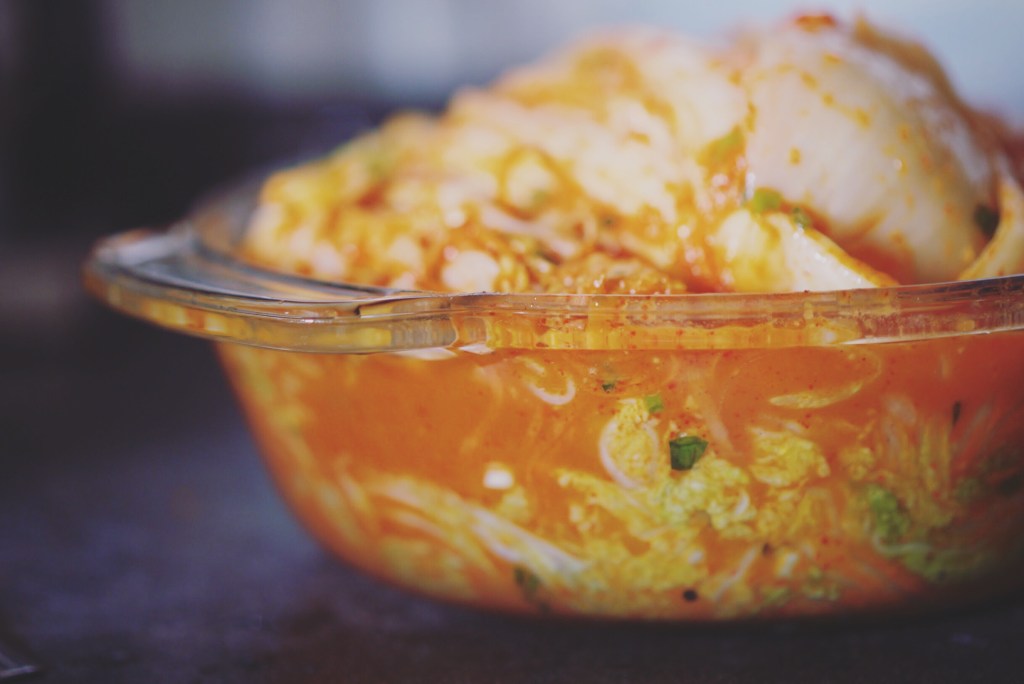

Or, let it ferment overnight at room temperature.

The cabbage will continue to release liquid during fermentation. Next day, I transfer the kimchi into glass bottles and keep them inside the fridge to let it continue to ferment slowly.

One large napa cabbage yields four large-680ml bottles of prebiotic-rich kimchi.
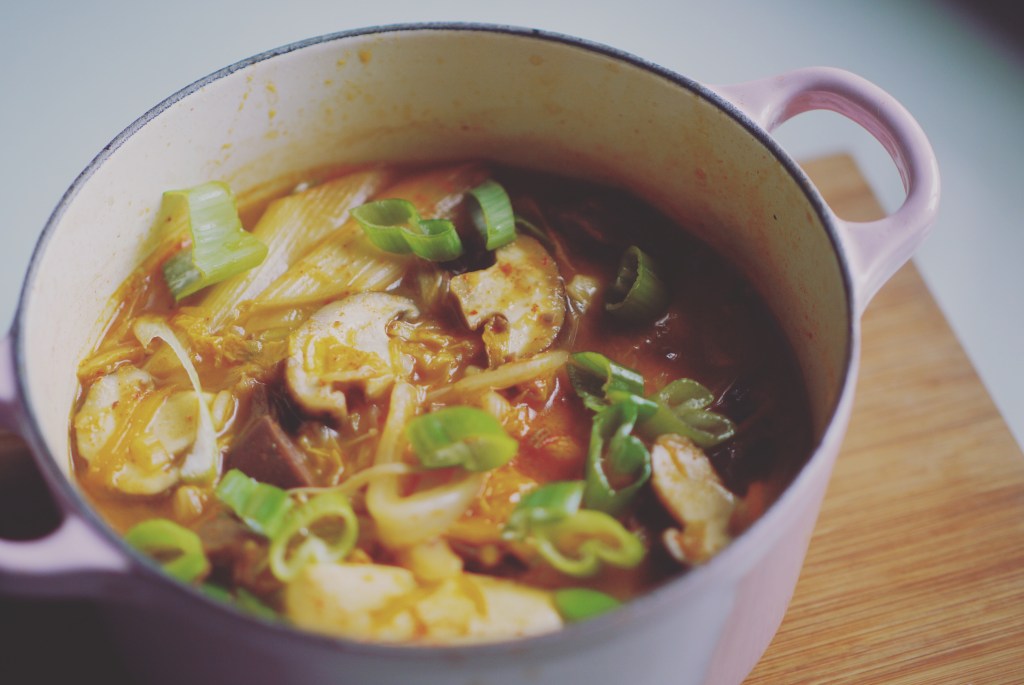
Besides eating the kimchi straight from the jar, I also add them to stews/ stir-fries/ fried rice.
Need more reasons to make kimchi at home? Here are more meat-free recipes that make good use of the good stuff!
Kimchi Jjigae
Quick Kimchi Pancakes
Kimchi Fried Rice
Kimchi Bibimbap
Mushroom and Kimchi Dumplings
Tofu and Kimchi Dumplings
